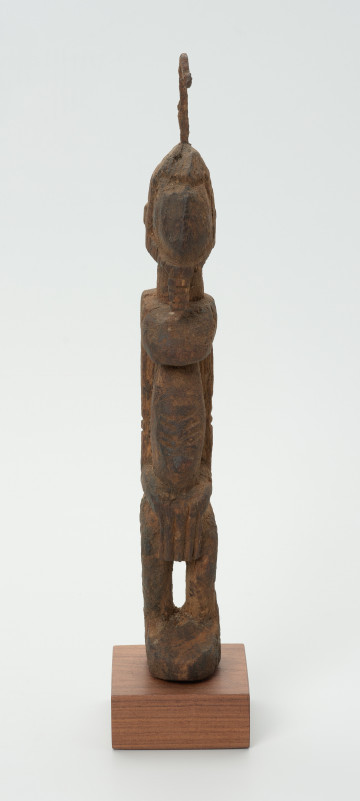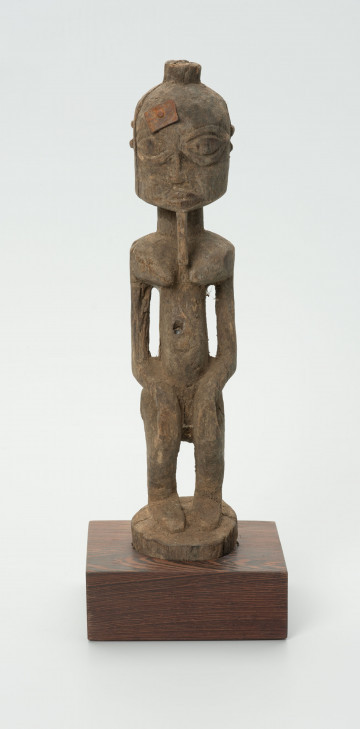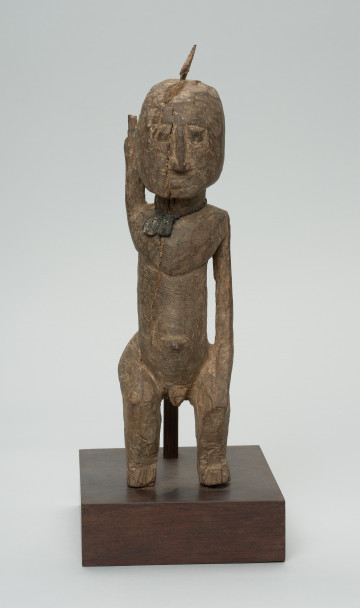
Figure - ancestor
między 1951 — 2000
National Museum in Szczecin
Part of the collection: Collection of Dogonian art
The Dogon are people living in the Republic of Mali. The basis of their economy is hoe-farming. Many of the Dogon annual rituals are connected to ensuring a good harvest. To this end, they thank the god Amma and their ancestors for a good harvest and ask for blessings for the coming field season. The two most important festivals in the agricultural calendar are Goru and Bulo, during which the priests of both cults of life - Hogon (priest of the Lebe cult) and Binukedine (priest of the Binu cult) - cooperate. On the day of the Goru festival, all men gather at the altar of Amma located in each homestead of the great family’s patriarch (ginna bana). Ginna bana mentions the names of their predecessors at the altar and then pray to the god Amma, giving thanks for the blessing of the harvest and asking for rain, good women, healthy children and the ability to survive until the next harvest. Ginna bana places an offering of pipilu beer (a type of konyo beer that has not been fully fermented) on the altar and then a paste made of rice and millet mashed in a palfrey mixed with water to ensure the prayers are effective. If the harvest was poor, the god Amma is asked for an abundant harvest next year. Then offerings brought by the men of the village are made. Each of them usually prepares a chicken and offers it to his nani (incarnation of the ancestor). That is because it is believed that the ancestor from whom nani is inherited exercises special care over his living incarnation, as long as the latter respects his ancestor and makes offerings to him. All animals are sacrificed one by one according to the seniority of the men offering them.
Ewa Prądzyńska
Author / creator
Dimensions
cały obiekt: height: 68 cm, width: 9 cm
Object type
figure
Creation time / dating
Creation / finding place
Identification number
Location / status

między 1951 — 2000
National Museum in Szczecin

między 1951 — 1991
National Museum in Szczecin

między 1951 — 2000
National Museum in Szczecin
DISCOVER this TOPIC
National Museum in Szczecin
DISCOVER this PATH
Educational path